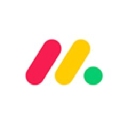How A Non-Technical Founder Bootstrapped A $50K/Month Automated Webinar Platform
Hello! Who are you and what business did you start?
My name is Melissa Kwan, I am the co-founder and CEO of eWebinar. I started this company with David Dawson, CTO of eWebinar and also my life partner.
eWebinar is the leading webinar automation platform that turns any video into an interactive webinar that you can set on a recurring schedule, or make available on demand. We save people from doing the same webinar over and over again for sales demos, onboarding, and training. To learn more about what an automated webinar is, see this article.
Our customers range from solopreneurs to publicly traded companies, mostly in the areas of sales, marketing, and customer success functions.
A the time of this interview, the product has been live for two years. Before that, we spent a year and a half building the product to get it ready for launch.
We are a bootstrapped company that works with a team of contractors around the world, with no full-time employees.
Our MRR is currently around USD 50k.

Download the report and join our email newsletter packed with business ideas and money-making opportunities, backed by real-life case studies.

Download the report and join our email newsletter packed with business ideas and money-making opportunities, backed by real-life case studies.

Download the report and join our email newsletter packed with business ideas and money-making opportunities, backed by real-life case studies.

Download the report and join our email newsletter packed with business ideas and money-making opportunities, backed by real-life case studies.

Download the report and join our email newsletter packed with business ideas and money-making opportunities, backed by real-life case studies.

Download the report and join our email newsletter packed with business ideas and money-making opportunities, backed by real-life case studies.

Download the report and join our email newsletter packed with business ideas and money-making opportunities, backed by real-life case studies.

Download the report and join our email newsletter packed with business ideas and money-making opportunities, backed by real-life case studies.
















